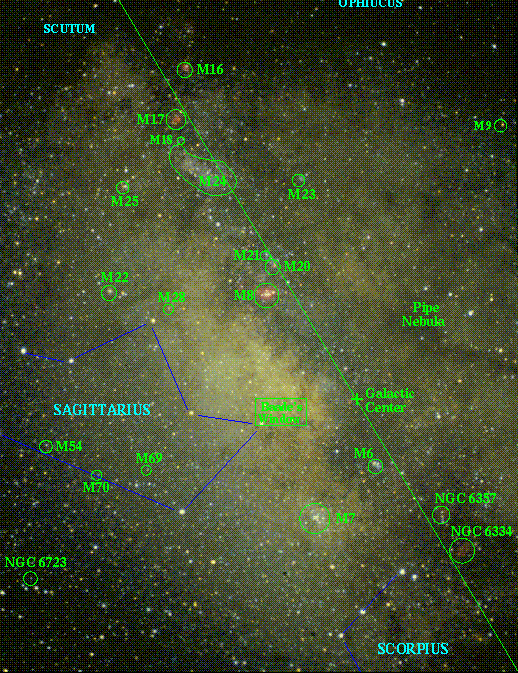
The Galactic center is an active place - one can find all sorts of extreme sources at all wavelengths, all the way into the central black hole itself.
The center of the Galaxy is some 8 kpc away, or about 24,000 light years in the constellation Sagittarius, at a declination of -29°, well into the Southern hemisphere.
It is well hidden by the large amounts of dust in the Galactic disk, but there are a number of windows where the dust extinction happens to be smaller than elsewhere and it is possible to get a glimpse of the central region through these. In addition, at longer wavelengths than optical the dust is not so much of a problem, nor at short wavelengths (X-ray and g-ray). At optical wavelengths the extinction can be up to 30 magnitudes, meaning that only one in 1012 photons reaches us from the center.
Figure 13.3 shows the central regions at radio wavelengths, with a field of view of about 1×1 kpc, produced at 90 cm (330 MHz) by the VLA. This is obviously a busy place!
A schematic diagram of the sources is shown in figure 13.4, rotated to be in Galactic coordinates (so the Galactic plane is horizontal). There are plenty of super nova remnants, marked SNR. The most obvious one is SNR359.1-00.5. Stars are very tightly packed in the central region, reaching densities of up to 107 MO pc-3 (near the Sun the density is only about 0.05 MO pc-3, while in globular clusters the central density reaches 104 MO pc-3.)
There is clearly emission from ionized gas, heated from inside by hot stars, (e.g. Sgr D, Sgr B1 and B2, etc). There is an amazing giant arc of radio emission showing filamentary structure (marked Arc). This was discovered in the 1980s, and when it was first seen it was thought to be an artifact and a lot of effort went into trying to get rid of it. (Radio maps frequently contain a lot of instrumental effects, or ``artifacts''). More, thinner arcs and wisps were discovered in later years. These are very likely to do with long coherent magnetic field lines, very much stronger than typical in the interstellar medium in the Galactic disk (see figure ).
Moving closer to the center, the picture gets more complex and difficult to disentangle. The center-most source is called Sgr A, and this divides up into Sgr A West, Sgr A East and Sgr A*. This last source is extremely compact, and is almost certainly due to the central black hole itself. Sgr A West appears like a mini spiral (figure 13.7) in an image at 6 cm. This is complicated structure in the ionized gas.

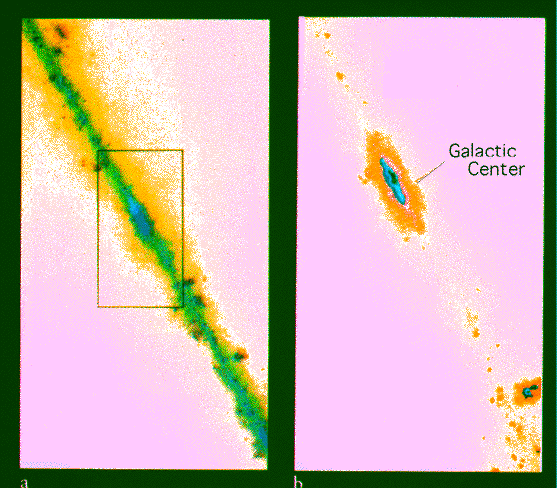
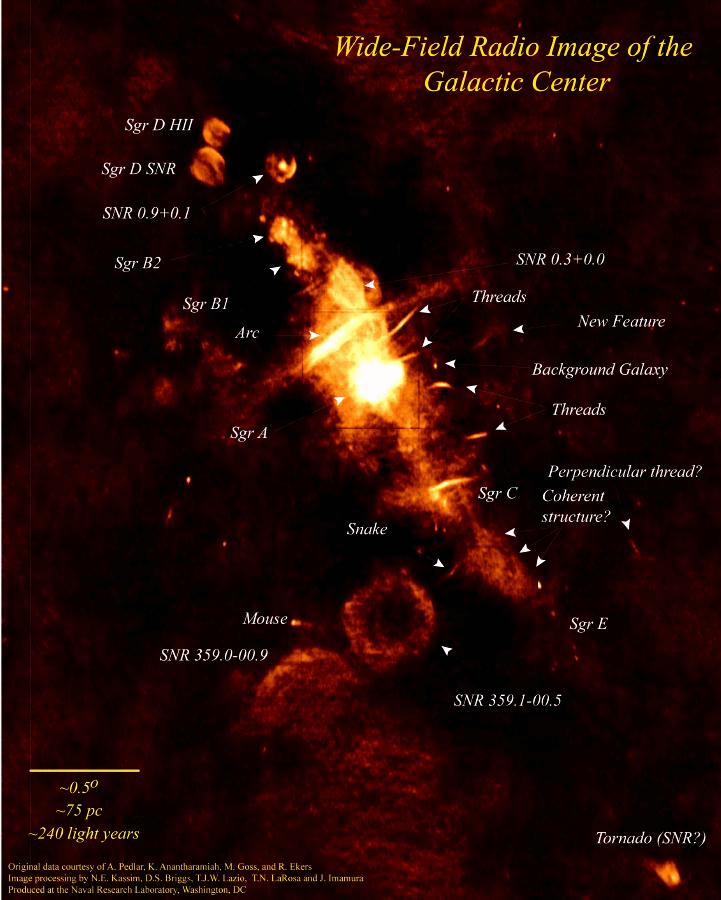
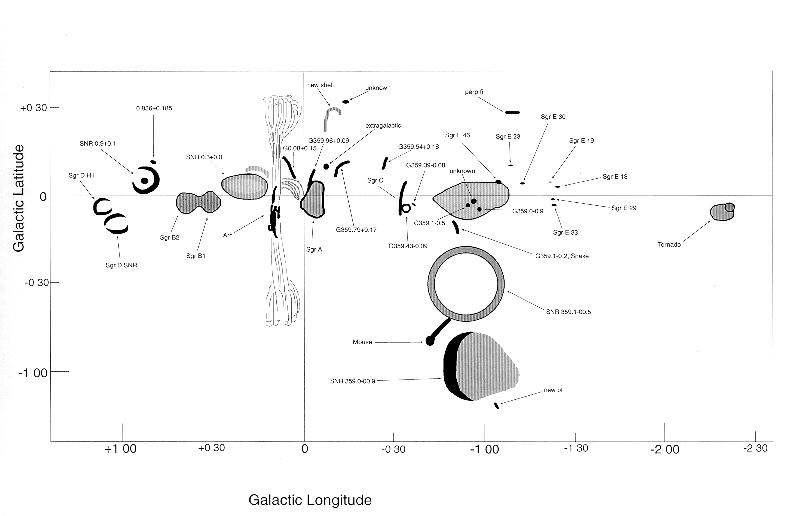
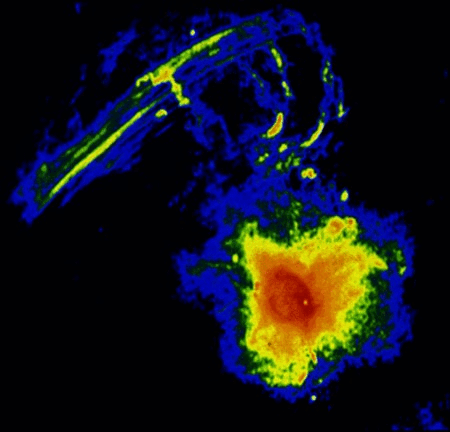
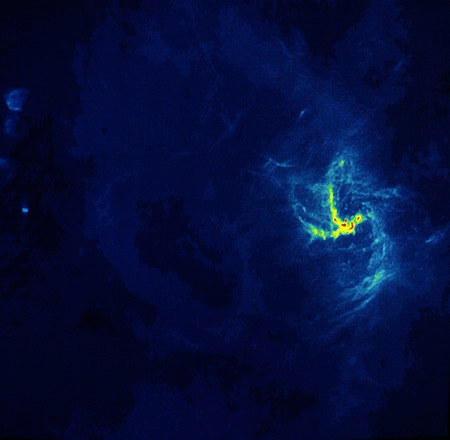
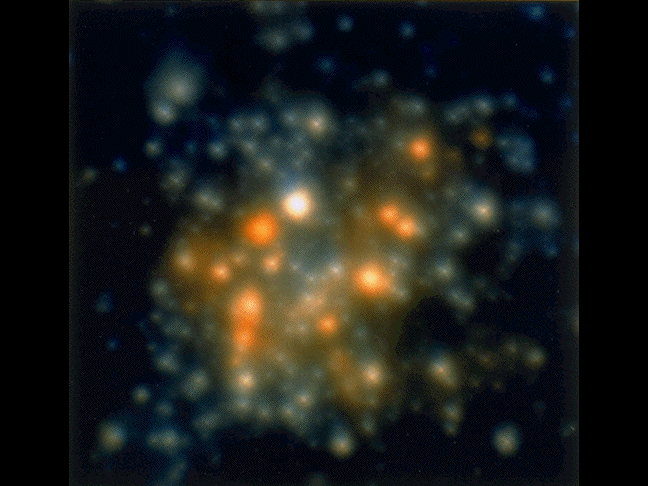
Stars can be seen at the center of the Galaxy, very close to the center. They are moving so fast (500 to 1000 km/s) that their proper motions are measurable even after a few years. In recent years even the bending of their orbits around the central massive source has been detected, by a team at MPI in Garching led by R. Genzel. Figure 13.8 shows the measured interior mass in the central parsecs.
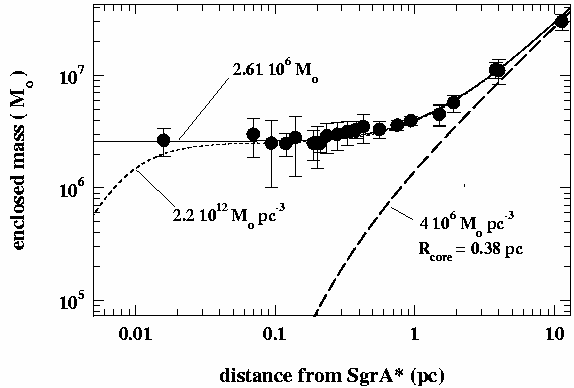
The stars can be seen so close to the central source, that only a black hole is a reasonable explanation for so much matter in such a tight space.
There is plenty of plasma and drifting gas in the Galactic center, which arises at least one difficulty with the black hole idea - some of it should be falling into the black hole and making it a powerful source at many wavelengths. Measurements only show a weak source at the center, perhaps 100 times weaker than reasonable models would predict, based on the black hole mass and the amount of material available to fall in. Apparently the black hole is quiet for some reason!
Several times the black hole has been referred to as the Galactic center itself. It is of course very massive, and dominates the central potential out to a parsec or so. Evidence that it is appropriate to call in the dynamical center of the Milky Way comes from the proper motion of Sag A*. At 8 kpc from us its proper motion is very small, about 10 milliarcsec/yr. This is easily measurable with VLBI radio techniques, and the amount turns out to exactly reflect the motion of the Sun around the Galaxy. Sag A* is clearly the Milky Way's dynamical heart.
Acknowledgement : this lecture is based on an excellent article on the Milky Way center by Anders Winnberg.
http://www.ncsa.uiuc.edu/Cyberia/Bima/GalCntr.html
http://chandra.harvard.edu/photo/cycle1/0204/
http://www.astro.ubc.ca/courses/astr202/GalCen/GalCen01.html
http://oposite.stsci.edu/pubinfo/pr/1999/30/
http://www.mpifr-bonn.mpg.de/staff/hfalcke/bh/sld4.html
http://rsd-www.nrl.navy.mil/7213/lazio/GC/
http://www.mpe.mpg.de/www_ir/GC/gc.html